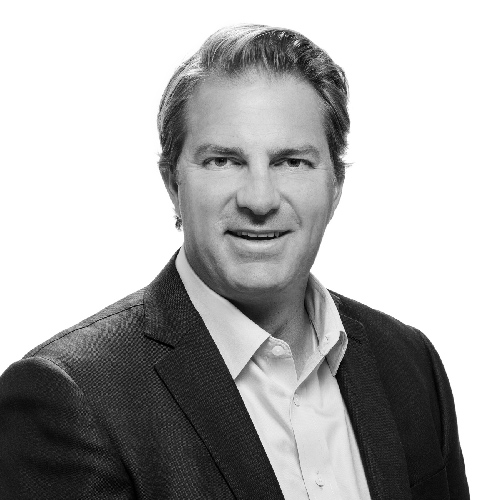“People have been trained to wait, and doctors have been paid to treat,” says Gavin Quinnies, cofounder and president of health risk management corporation US HealthCenter Inc (USHC). But he offers a caveat to that understanding: “That’s got to change.”
Quinnies speaks from a place of experience. He’s been involved in wellness programs as far back as 1992, and he’s worked with engineering and management systems his entire career. In that time, Quinnies became an employer with a self-described love for quality, safety, and prevention. In 2003, he partnered with Dr. G. Raymond Gavery—a medical pioneer and practitioner with a deep background in scientific research. “It was the perfect combination of commercial and medical,” Quinnies says.
Together, they developed what would eventually be known as PredictiMed, a predictive modeling analytics engine designed to help manage a given population’s health services in a variety of intricate ways. PredictiMed has the unique ability to find what Quinnies calls “asymptomatic, predisease risk participants”—those whose lifestyle, genetics, and related factors put them at risk for certain health situations—and aggregate remarkable amounts of information to those who need it most, including employers, insurers, hospitals, and healthcare institutions.
The technology is detailed in Gavery’s abstract, “Compound Theory of Morbidity Progression,” in which he states that said theory and PredictiMed analytics are “based on discovering the phase of disease morbidity where preventive and preemptive intervention can be most effective in lowering the incidence of chronic disease, as well as prevalence of its debilitating phase.”
US HealthCenter
By the Numbers
1,500+
clients
5,000+
locations
15%
average risk-burden reduction
200+
groups on the health plan
70%
average engagement
91%
of participants would recommend their coach to a friend
20,000+
healthcare professionals using PredictiMed as members or providers
That information includes the all-important matter of paying for one’s healthcare needs. Quinnies notes that PredictiMed also allows employers and insurers to understand what problems are going to drive their medical spend, and it allows healthcare providers to look up patients’ risk for a better understanding of what lies ahead. “One of the most fascinating discoveries is our ability to be close to the expected amount of potential spend within a group,” he says.
With third-party validation for predictive accuracy from the Intel-based Care Innovations Validation Institute, PredictiMed delivers one-of-a-kind integration of components, which results in a road map for any organization that’s taking on the risk of a particular population. Then, with the help of US HealthCenter’s Wholeistic coaching program and HealthCounts engagement platform—other resources in USHC’s toolbox—those organizations are better equipped to manage and engage whole people, not just their diseases.
All these things factor into changing a healthcare landscape that Quinnies says is almost 100 percent reactive right now: people waiting until something drastic happens to seek medical help, and doctors focusing the majority of their time and resources on treatment of those drastic happenings. “There is no medical or mathematical reason why catastrophic illnesses such as heart disease and stage four cancer cannot be
prevented if we focus our energy on managing the process,” Quinnies says.
Gavery’s abstract adds that while his compound theory of morbidity “supports the concept that chronic disease management would prolong life; it stipulates that the primary focus of morbidity reduction can be achieved only through prevention and preemptive intervention in the early phase of morbidity process before symptoms occur.”
In fact, health management programs have begun to turn the tide toward a more preventive approach. But Quinnies finds it to be highly segmented thus far, with some programs focusing on genetic health management, while others hone in on biometric or pharmaceutical health management. By contrast, he says, PredictiMed generates a complete ecosystem in a coordinated effort that takes the full breadth of a particular population and customizes to fit its needs.
“While we cannot predict injuries, accidents, or acute diseases, we can project a fairly accurate model to predict the onset of a chronic disease,” Gavery’s abstract explains. “In the majority of cases, chronic disease morbidity progression follows a fairly predictable pattern depending on the identifiable risk factors.”
“There is no medical or mathematical reason why catastrophic illnesses such as heart disease and stage four cancer cannot be prevented if we focus our energy on managing the process.”
Quinnies sees that the numbers are at the core of their advancements for individual care. “What makes our mathematics sing is that we gather all the data necessary to understand what condition the individual’s at risk for,” he says. “Making it personal is an intrinsic motivator. Our system helps people find the way to their why, and that’s the whole point of it.”
Although things such as activity trackers and biometric screening are additional evidence of technology’s mark on healthcare, Quinnies cautions their individual merit. “All those things have their place, but in singularity, they’re doomed to fail,” he says. “When people ask why our predictive modeling is so accurate, it’s because we synthesize what the scientific community determines what causes the disease. When you combine all the experts into a smart system, it becomes very accurate.”
PredictiMed, Quinnies says, serves wellness programs, the healthcare market, and the insurance market, to name a few beneficiaries. In fact, one of its hallmarks is an insurance model that allows employers and insurers to reduce their costs for catastrophic diseases by 15 percent, according to Quinnies. The model also affects claims by either reducing the severity of existing claims or eliminating certain claims altogether. “If we can treat earlier in more routine practices, then like every other industry, we ought to be able to increase the efficiency,” Quinnies says. “In doing so, we increase the repeatability, therefore improving the margin and utilizing our precious healthcare resources more intelligently.”
Over the past several years, USHC has been able to help reduce medical costs by an average of more than 10 percent while reducing risk burden by an average of more than 15 percent for hundreds of clients.

